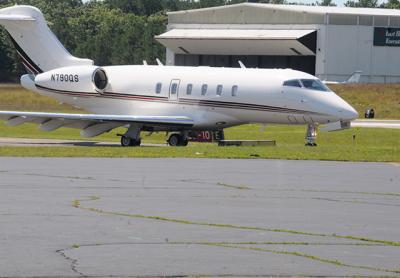Fed Up, New Group Wants to Close Airport

Frustrated by continued noise from helicopters and planes using East Hampton Airport, several people are calling for the airport to be closed, saying the approximately 600-acre, town-owned site could be put to better community use.
Patricia Currie, a Noyac resident, and Barry Raebeck of Wainscott have formed a group called Say No to KHTO, using the airport’s aviation designation (KHTO). In a press release, the organization said it was asking that the facility be closed due to “increased East Hampton Airport operations coupled with the lack of meaningful aircraft noise abatement.”
Say No to KHTO suggests that the right course of action is to “transform our land to benefit all residents.”
Though the use restrictions that took effect at the start of the summer season included an overnight curfew and extended limited hours for takeoffs and landings by those planes deemed noisy, a once-a-week limit on takeoffs and landings by noisy planes, which the town board hoped to adopt, is tied up in court following lawsuits by aviation groups. Anti-noise advocates, including former members of a town-appointed airport noise advisory committee, have asserted that the restrictions in place do not make enough of a difference.
The commercially zoned airport acreage “could be used to support environmentally sensitive businesses providing many times the local jobs that the airport does,” Mr. Raebeck said in the press release. A co-founder of the Quiet Skies Coalition, he has broken away from that group to advocate for the airport’s closure.
“The airport is being operated at a huge cost to the community in lost jobs and lost dollars,” Mr. Raebeck said. “We are actually subsidizing the destruction of our own environment and quality of life — simply to benefit the handful of commercial operators and their customers.”
While under agreements with the Federal Aviation Administration, the town must use all revenues generated from the airport for airport purposes, if the land were put to other uses the town could generate lease income that would reduce the burden on taxpayers, according to Mr. Raebeck. The new group plans to develop alternate uses that would be submitted to the public.
“This land could be used for wind and solar power generation, for affordable housing, for parks and recreation, and for low-impact businesses,” Mr. Raebeck said in the release.
Also frustrated by the town board’s efforts to respond to aircraft noise complaints, members of the former town airport noise committee have regrouped independently this summer to continue a public focus on what David Gruber, a member of the committee, has said is an “issue too important to be left to town government alone.”
The original town airport noise committee had recommended that the town adopt a number of “mutually reinforcing” airport restrictions, according to Kathleen Cunningham, a member of the committee and chairwoman of the Quiet Skies Coalition. That only some of the original committee’s recommendations were adopted weakened “the entire proposed structure of noise control,” she has said.
In a series of letters to the editor, Mr. Gruber, among others, has criticized Peter Kirsch, the town’s aviation attorney, and the strategies he recommended by which the town tried to navigate the legal framework of enacting restrictions while not running afoul of the F.A.A.
Traffic at the airport, according to a recent report, increased by 3 percent between January and July this year, compared to 2015, but the number of takeoffs or landings from May through July was lower, by 570.
Use of the airport by turboprop planes, including seaplanes that fall outside the most restricted category based on noise, seems to have replaced some commercial transportation company helicopters. Turboprop plane use increased by 11 percent in the first seven months of this year, over last year. Jet traffic also increased, by 15 percent.
Although complaints to the town’s airport noise hotline have decreased sharply from the number lodged during the January to June period last year, the cause — whether from a dropoff in the number of people bothered by aircraft noise or fatigue among those who think it is futile to call — is unclear.
The notion of closing a municipal airport believed to be have negative impacts on its community is not unique to East Hampton. In California, the Santa Monica City Council voted earlier this week to close its airport as soon as possible, citing a range of adverse impacts including noise, air pollution, and safety problems. It proposed using the land as a park instead.
“Our council and community in solidarity, want to close the airport that predominantly caters to the 1 percent that can afford to travel by private jet,” the Santa Monica pro tem mayor, Ted Winterer, said in a press release.
The vote represents the third time the city government vowed to close the airport, after voters approved the idea in a 2014 ballot measure. The F.A.A. has legally blocked this, however.
